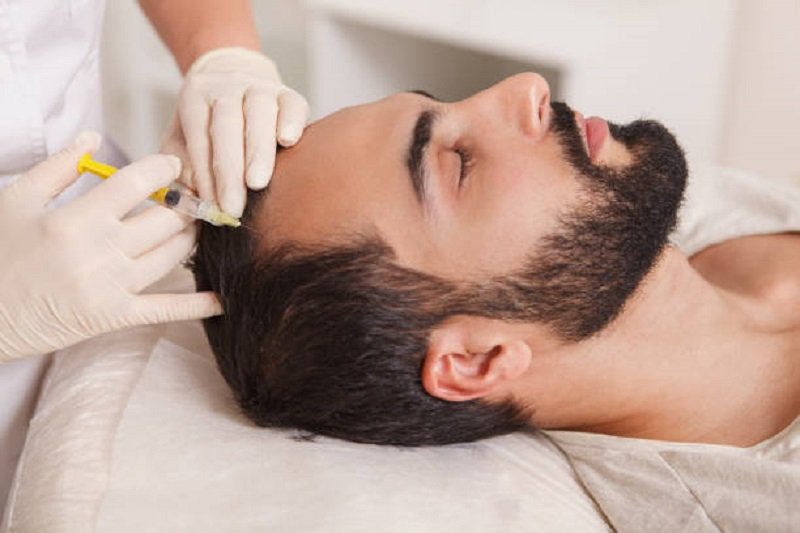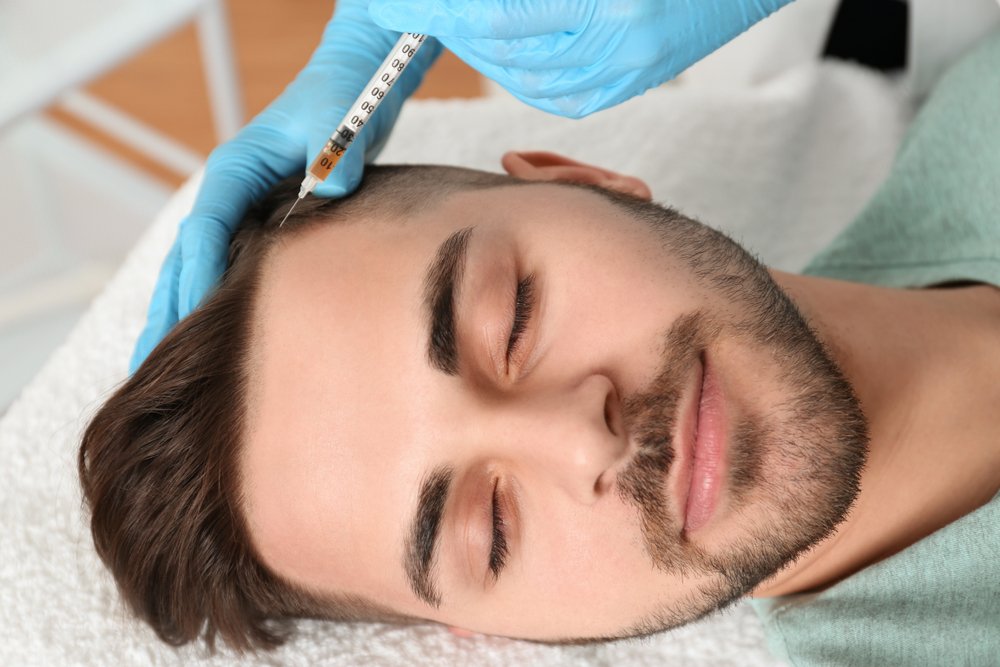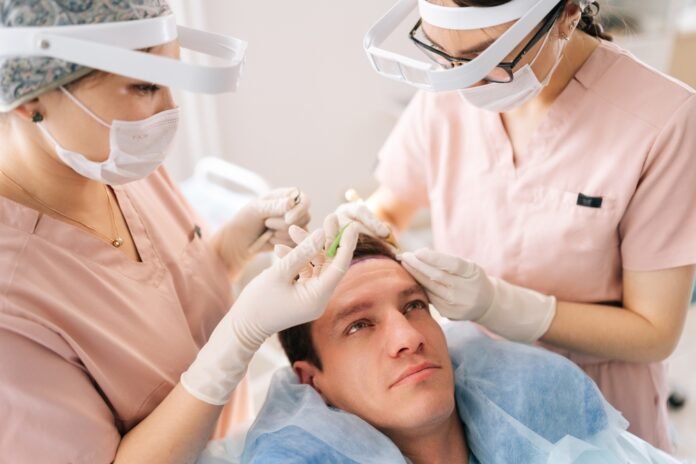Have you ever looked at the drain of your bathroom shower, wondering why there is more hair there than on your head? Are you also looking at your hairline in the mirror, thinking it is receding faster than the tide? We might as well mention that you are not alone in this, and solutions do exist.
Millions of Australians and millions more around the world are suffering from hairloss, but the discussion of this issue is still a huge taboo. And one of the first steps towards reclaiming not only your hair but also your confidence is to educate yourself on the various treatment modalities if you’re a victim of early stages thinning or have experienced much hair loss. This is the best time to take everything from breakthrough therapies like PRP therapy to age-old medications and natural remedies for restoring hair.
This comprehensive guide will cover everything from the causes of hair fall to the latest advancements in treatments available. Learn about the costs, success, and real expectations of each type of hair loss treatment for informed decision-making regarding your hair restoration journey. We will cover everything from PRP treatments in Melbourne to checking for efficacy for oral hair fall pills.
Table of Contents
Learning Hair Loss: Basis For Treatment
Causes Of Hair Fall In Men And Women
In the beginning, let’s get to the basics – what causes hair loss? In men, the main reason is often called ‘androgenetic alopecia’, or male pattern baldness. This hereditary condition affects about 70% of men by age 70; it causes the hair follicles to shrink due to sensitivity to dihydrotestosterone (DHT) level. Women undergo near conditions but rather do so in a manner often viewed with overall thinning of hair instead of receding hairline bald spots.
Other than genetics, several factors can accelerate hair fall. Stress is paramount – be it physical stress from illness or surgery, or emotional stress from some major upheaval. A disruption in the normal levels of certain nutrients like iron, vitamin D, and some B vitamins may lead to an underdevelopment of hair follicles that may potentially sprout beautiful hair. Likewise, alterations of hormonal levels due to either pregnancy, menopause, or thyroid disorders can lead to hair problems.
Should I Be Worried About My Hair Loss?
Sometimes, the differentiation between normal hair fall and problematic loss seems somewhat like solving a puzzle. Losing 50-100 hairs from your head every day, give or take, is a completely normal process; that is, each part of the hair growth cycle. But if you see a significant number of hair strands in your brush, on your pillow, or in the shower drain, then that surely is a wake-up call.
Warning signs would include thinning at the crown or temples or a more obvious widening of the part line where clumps of hair are washing away or getting styled. In men, the classic signs are a receding hairline forming an ‘M’ shape and thinning at the crown. In women, thinning of the ponytail is quite evident, as is increased visibility of the scalp when hair is pulled back.
Your Medical Options: Hair Loss Pills And Treatments By Prescription

Medication For Male Pattern Baldness; What Definitely Works?
Indeed two medications have stood the test of time and clinical scrutiny to treat male-pattern baldness. Finasteride (brand name Propecia) works by blocking the enzyme that converts testosterone to dht. Research shows that approximately 80 percent of men taking finasteride maintain or recover hair to some extent.
Minoxidil (brand names Rogaine and its generics), in contrast, works differently. It is a topical solution that promotes blood flow to hair follicles, prolonging the growth phase of the hair cycle. The drug has been demonstrated to be effective in males and females at the 2 percent and 5 percent concentrations. The effort is to continue using the medicine; discontinuation leads to losing whatever benefits have been gained within several months.
Hair-Pull Pills: What Other Options Are There?
The market for hair fall pills is not limited to prescription drugs. Biotin supplements have become incredibly popular among the masses, although scientific evidence supporting their efficacy is limited for those not biotin deficient. More promising are saw palmetto supplements, which may function to some extent to lower DHT levels but might do so far less potently than prescription drugs.
Full hair vitamins would typically be concocted out of a range of nutrients such as iron, zinc, vitamin D, and more B-complex vitamins. Studies with the likes of Viviscal and Nutrafol have provided clinical evidence supporting the effectiveness of hair density and growth improvement. These act by filling nutritional gaps which might be feeding into hair fall and would benefit people with dietary restrictions.
PRP Hair Regrowth: The Cutting Edge
What Is PRP Plasma?
The waving of the path to a great new horizon for treating hair loss, PRP therapy is perhaps one of the most glamorous new approaches in hair restoration. In this approach, the healing capabilities of the environment are used to extract platelets from the blood and inject the growth factors contained in the platelets into the areas with thinning hair. It is an intriguing basic science. These growth factors have the capability of stimulating dormant hair follicles and enhancing other healthier hair follicles.
This is regarded as a blood draw. Then blood will be centrifuged to separate the doses of platelet-rich plasma from other blood components. The concentrated PRP, filled with growth factors and proteins, is injected carefully under the scalp with little needles. The entire procedure takes about 60 to 90 minutes.
PRP-Hair Treatment Success Rate Directly… Statistics
In numbers – because when it comes to investing in your hair treatment, you’d want the odds in your favor. Clinical studies suggest that success rates for PRP hair treatment for a given patient typically lie somewhere between 70 and 90 percent. A systematic review in 2019 said that for most patients, hair loss was reduced by 30 to 40 percent after treatment, while many reported increased hair density and thickness.
The success of these treatments rests squarely on the selection of the patient and the outlined protocol. Patients with hair loss less than five years seem to respond better than those with old baldness. Age counts – indeed, younger people usually get the best results. The number of treatment sessions matters too; usually, the best protocols involve in general 3 to 4 initial sessions every four to six weeks, then maintenance treatments every four to six months.
PRP Hair Treatment Results: What to Expect Realistically?
Platelet Rich Plasma Before and After Hair: Timeline Results
Knowing the timeline of platelet rich plasma before and after hair transformation sets realistic hope. At first, do not panic if shedding occurs during the first two to four weeks- this is a good sign, actually, dormant follicles are activated and pushing off old, weak hairs to make room for new hair growth. Think of it as spring cleaning on your scalp.
“In fact, real magic starts to happen around three months. This is when many patients have noticed the halting of hair fall and, of course, tiny new hairs sprouting up from the treated area. This is when first Baby hairs will gain length and thickness from four to six months on. The results, of course, most patients will report between six to twelve months post-treatment: their hair is much fuller, thicker, and better coverage for thinning areas.”
Factors That Affect The Outcome Of PRP Hair Loss Treatment
Not all PRP treatments yield different results, and knowing why can help you optimise your results. Age plays an important role: patients younger than 40 respond much better than older people, likely because of more responsive follicles and healing ability. Another critical factor is the level of hair loss-the earlier an active follicle is intervened upon, the better; results are, by consequence, ever poorer when treating areas that have been bald for years.
Your health status, however, considerably affects PRP effectiveness. Smoking, for example, impairs blood flow and healing such that it may lower the treatment success by as much as 40%. Nutritional health, stress levels, and any underlying comorbidities often determine how appropriately your body reacts to the specific massage treatment. There are certain medications, particularly blood thinners or some anti-inflammatories, which may require to be withheld for temporary periods before massage treatment.
Solutions to Balding: An Advanced Alternative for Extreme Cases of Hair Loss

Alternative Baldness Treatments When All Others Have Failed
Once conventional treatment options fail to deliver the results desired, it’s time to investigate advanced solutions for baldness. Hair transplantation has gone a long way from the obviously “plug” look of yore. Today, with Follicular Unit Extraction (FUE) and Follicular Unit Transplantation (FUT), it is possible to achieve handsome-looking results that are practically undetectable. These procedures take healthy functioning follicles from donor sites and transplant them into balding areas for permanent results in suitable candidates.
For others, scalp micropigmentation offers an innovative solution. This appeal would especially go to individuals who prefer an extremely shaved style or would attempt to attain some semblance of increased density. In this procedure, cosmetic tattooing is applied to deposit pigment in the scalp to reproduce the look of hair follicles. It hides scars from previous transplants or helps to create a sharp hairline wonderfully. With adequate care and touch-ups from time to time, results can last for years.
Hair Restoration: New Treatment Trends And Evidences
Hair restoration has come a long way from its infancy. FUE is currently the most frequently performed hair transplant method, which extracts follicular units one at a time and transplants them to lined recipient areas. This highly favored technique gives rise to small, barely perceptible scars and enables a more rapid recovery. The success rate of FUE lies in the range of 90-95% regarding graft survival in the hands of skilled surgeons, with complete results observable after a period ranging from twelve to eighteen months.
FUT is considered suitable for the extensive balding pattern due to a higher graft yield in one session while leaving a linear scar. Robotic-assisted transplantation employing ARTAS or other means may enhance accuracy and precision in graft extraction and graft placement. Based on the conclusion, surgical competence is the most essential quality of the surgeon. Therefore, you should seek out a surgeon who specializes in hair restoration rather than one who adopts a more generic approach to plastic surgery.
How Do You Treat Hair Loss Based on Your Specific Type?
Androgenetic Alopecia Treatment Strategies
It should follow an individualized and target-specific approach, as the hair loss of androgenetic alopecia is caused by an inherited sensitivity to hormones. In males, treatment with finasteride and topical minoxidil is considered to be the gold standard. This pair reduces DHT production (the root cause) while improving blood flow to the hair follicles (the symptom). Treatments are best initiated when one first notices a thinning, as this markedly increases the chance of success, as opposed to those who wait until they have lost a significant amount of hair.
Women suffering from androgenetic hair loss face different challenges since the hormonal treatment used does not suit men. Topical minoxidil remains the first-line treatment, whereas some women may also benefit from spironolactone, which is an anti-androgen drug. Hormonal replacement therapy for some females during menopause might help but this should be properly supervised. The results of PRP treatment are particularly encouraging in female pattern hair loss.
Conclusion
Having delved deep into the extensive world of methods and solutions for hair loss treatment, one thing becomes quite apparent – there is genuine hope among the ones stricken with hair fall. From understanding the causes to state-of-the-art treatments such as PRP, we have gone through the entire spectrum of options for you. The simple message must be; successful hair restoration hardly ever depends on a single magic bullet but on some well-thought-out combinations tailored to your present situation.
Whatever works to keep one person’s hair healthy and beautiful may simply need alteration to suit another person’s unique path. Assure yourself that in the latest developments, the science of hair restoration has gone far beyond the antiquated solutions suggested by previous generations. With dedication to an appropriate treatment and the maintenance of realistic expectancies, reclaim control over your hair loss, and prosper toward the fuller, healthy crown that you have longed for. The first step? Stop thinking and start doing – Thank yourself later when you see your future self.








